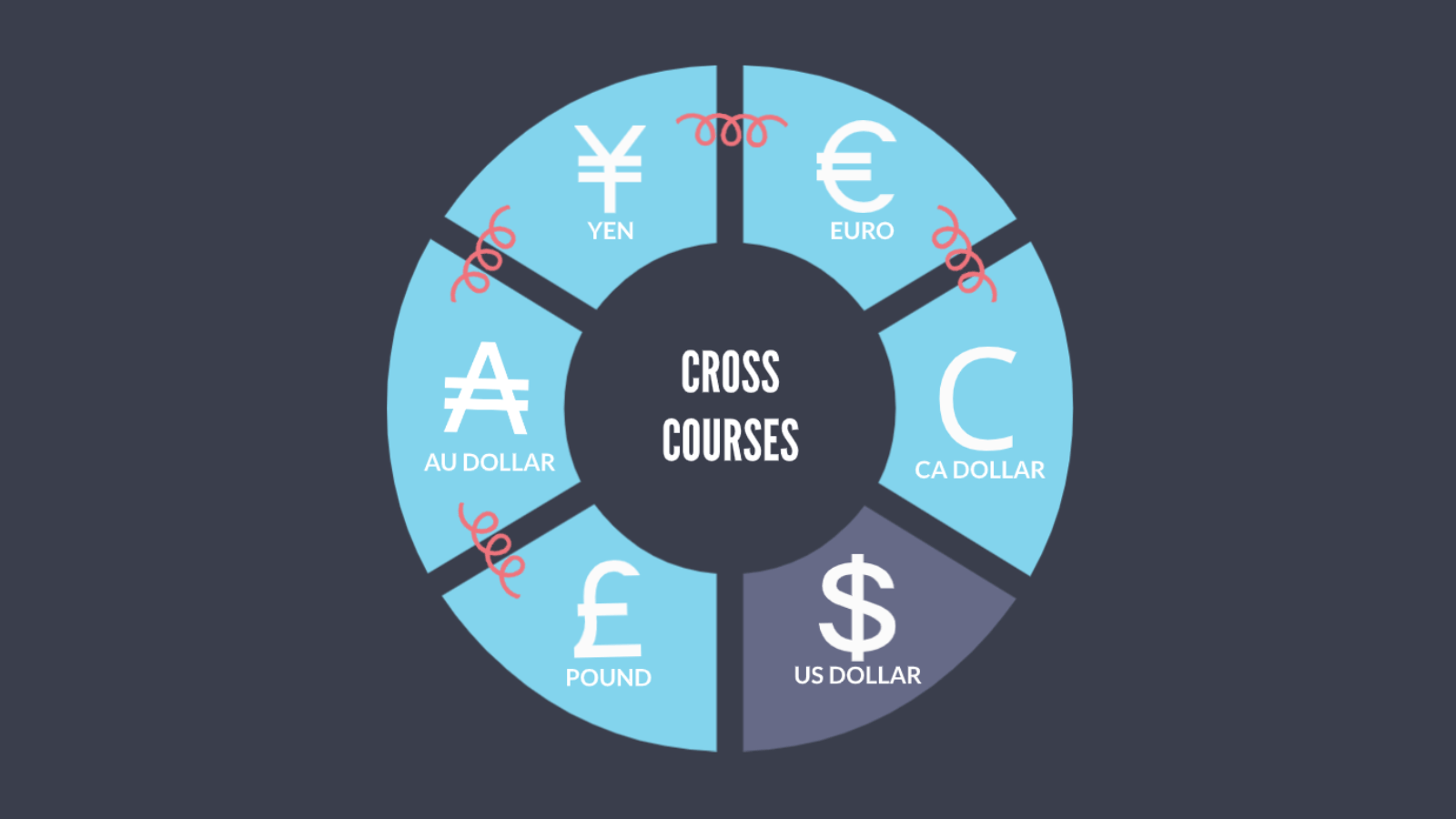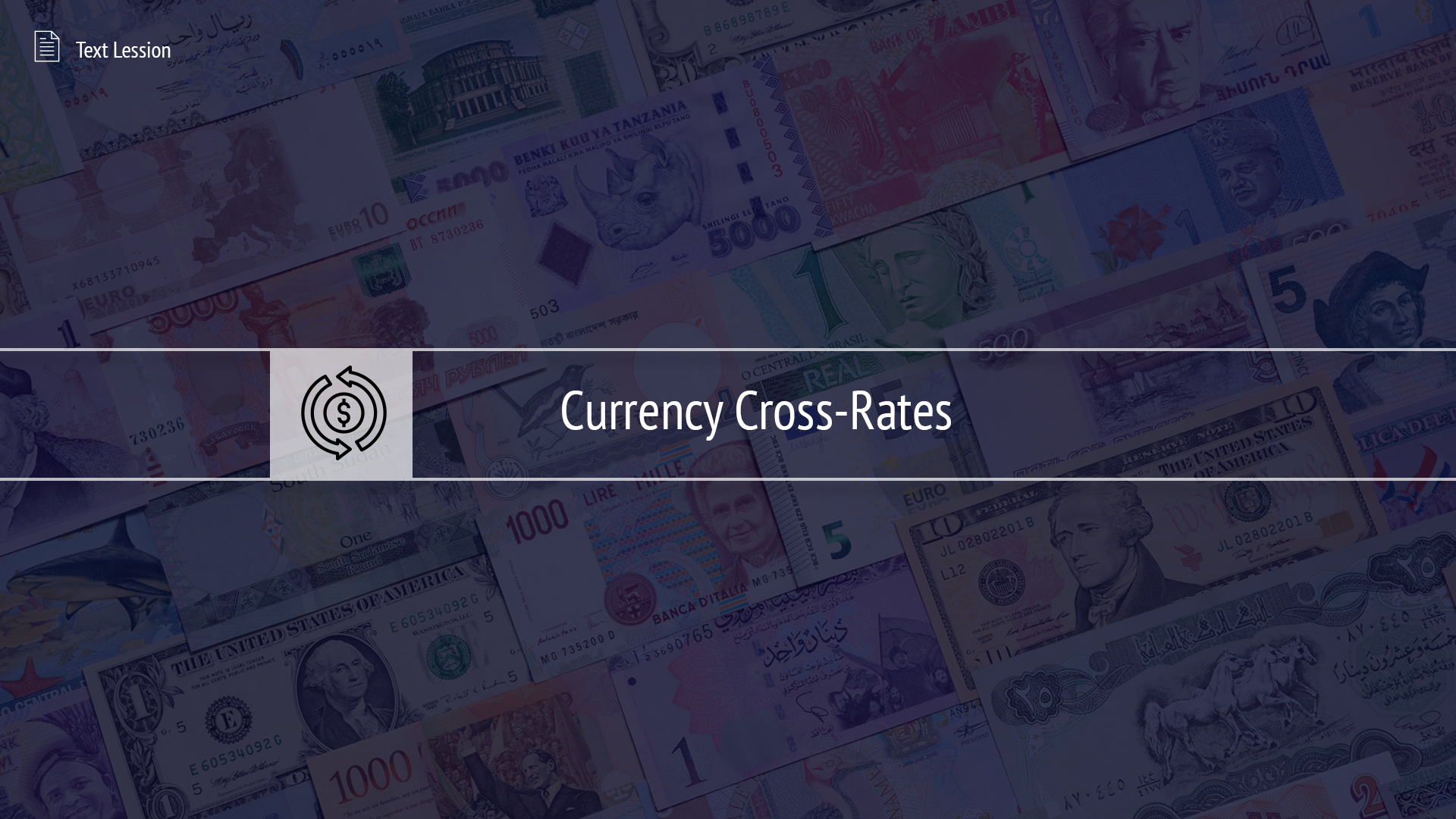Currency cross-rates refer to alternative primary currency pairs.
In such pairs, the US dollar is not present as either the quoted or the base currency. For example, USD/JPY is considered a “major pair” as it includes the United States dollar. In contrast, EUR/GBP is considered a cross-pair as it does not include the dollar.

The most traded currencies globally are:
- US Dollar
- Euro
- British Pound Sterling
- Australian Dollar
- New Zealand Dollar
- Canadian Dollar
- Swiss Franc
- Japanese Yen
Therefore, any currency pair comprising the above-listed currencies, except the US dollar, can be a cross-pair.
An exotic currency pair, on the other hand, includes a major currency and a second currency (belonging to emerging or small economies). An example of such a pair is EUR/ZAR, which includes the euro and the South African rand.
Opportunities with Cross-Pairs
You can have many more opportunities in trading cross-pairs if you add them to your traded instruments.
If the major currency pairs do not offer suitable trading conditions for you, you can find good trading opportunities among cross-pairs. Such a situation may occur during the inactivity of major pairs, but at the same time, the activity of crosses may increase. For example, during the Asian trading session, EUR/USD is not very active, while AUD/JPY may be more volatile.
Description of Cross-Currencies
The US dollar has been considered the sole global reserve currency for many years, so to exchange one currency for another, you first needed to convert it to US dollars.
Crosses provide the opportunity for direct exchange without involving US dollars. However, major pairs are still more frequently traded and are considered more liquid as the US dollar remains the most used reserve currency.
Major crosses (such as GBP/JPY, EUR/GBP) are also very liquid due to the strong economies backing them. However, the liquidity of these currencies cannot compare to the liquidity of the major currency pairs. Exotic pairs are less liquid, hence, traded even less frequently.
Price can follow the trend excellently during reduced liquidity. If a bank or financial institution participates in trading crosses, fewer traders can trade against them. This means that during major price movements, they can occur quickly and approximate a long-term trend.
What to Know When Trading Cross-Pairs
Keep in mind that illiquidity can be a “double-edged sword”. If the price changed quickly in one direction, it could reverse and change even faster in the other direction. The chart below shows the change in the value of the EUR/JPY currency pair. It underwent a volatile change; first, the pair dropped in price and was in a tight flat, and then it quickly broke through it and returned to its previous level.
When entering a trend you need to remain cautious
When entering a trend, you should be aware that strong volatile price movements can occur before a trend in a flat. This means that you can expect a lot of small losses before you start to make money on this trend.
Also, due to the fact that currency pairs are not liquid, broker spreads on them can be higher, which will bring a lot of trading costs. Additional risks and expensive transactions due to their volatility mean that trading exotic cross pairs should be done with caution.
How to use economic reports to trade crosses
When trading crosses, economic reports can give you many advantages because crosses can appear to have a steady trend. If there is a high demand for one currency and a low demand for the other, the probability of a trend increases.
If a country releases a report on the economy where it appears to be very strong, then you can expect an increase in demand for that country’s currency.
Conversely, if a state issues a poor economy report, there will be less demand for that state’s currency.
If you understand all of the above principles, you will try to make money on trades after the reports are released. Traders know how to identify states with strong economies and can trade against states with weak economies.
